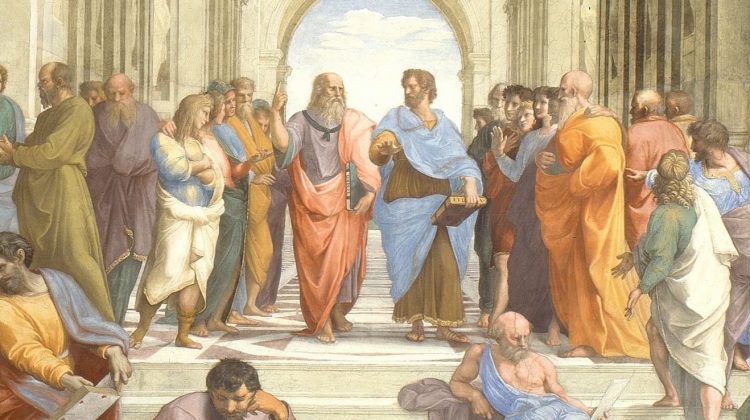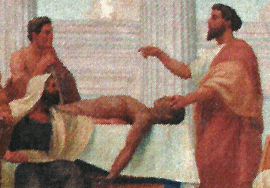
Plato and Aristotle Debate
It is sometimes said that Plato attempted to understand the world through pure reasoning, whereas Aristotle was more empirical and willing to observe. While this is far from the truth, it is perhaps fair to say both excelled in different areas of thought. Plato had a greater impact on politics, theology, ethics, and aesthetics, while Aristotle’s influence was stronger in science and biology.
Even Aristotle recognized heart not brain as source of intelligence and body control, but Plato has another belief states that: ‘the brain is the originating power of the perceptions of hearing and sight and smell, and memory and opinion may come from them’.
The debate between them has been recognized in one painting “The School of Athens” of the Raffaello Sanzio da Urbino, known as Raphael, was an Italian painter and architect of the High Renaissance.
The two main figures in the work are placed directly under the archway and in the fresco’s vanishing point, a compositional trick to draw the viewer’s eye to the most important part of the painting. Here, we see two men who effectively represent the different schools of philosophy—Plato and Aristotle.
An elderly Plato stands at the left, pointing his finger to the sky. Beside him is his student Aristotle. In a display of superb foreshortening, Aristotle reaches his right arm directly out toward the viewer. Each man holds a copy of their books in their left hand—Timaeus for Plato and Nicomachean Ethics for Aristotle.
Plato’s gesture toward the sky is thought to indicate his Theory of Forms. This philosophy argues that the “real” world is not the physical one, but instead a spiritual realm of ideas filled with abstract concepts and ideas. The physical realm, for Plato, is merely the material, imperfect things we see and interact with on a daily basis. Interestingly, some people believe that Raphael used Leonardo da Vinci’s face for Plato, based on similarities from his self-portrait.
Conversely, Aristotle’s hand is a visual representation of his belief that knowledge comes from experience. Empiricism, as it is known, theorizes that humans must have concrete evidence to support their ideas and is very much grounded in the physical world. Scholars argue that this divide in philosophies, placed at the center of The School of Athens, is the core theme of the painting.








